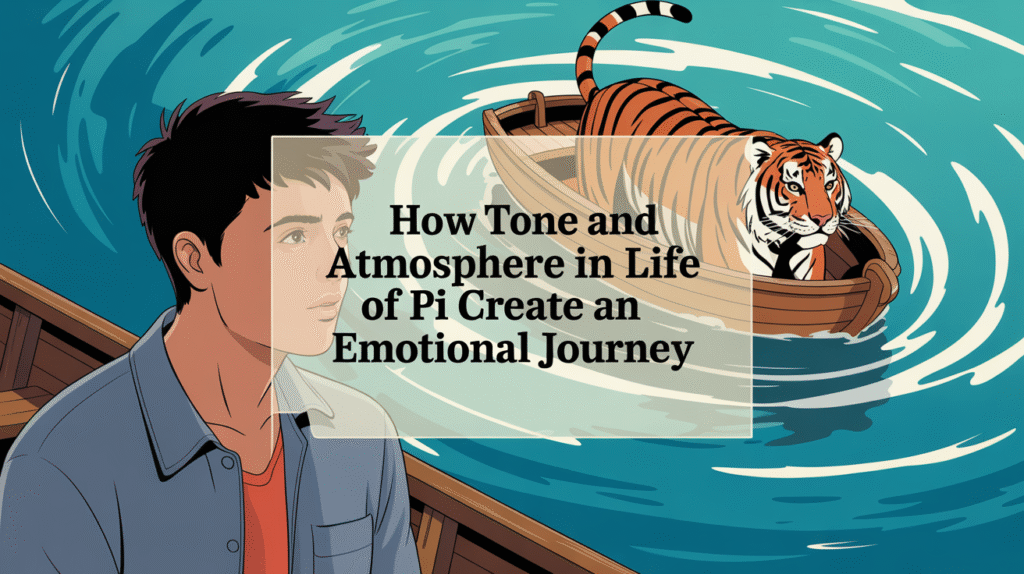Life of Pi remains a literary and cultural landmark more than two decades after its release. Its blend of spirituality, adventure, and philosophical inquiry continues to inspire readers, writers, and filmmakers around the world. The novel’s legacy isn’t limited to awards and adaptations, it lies in its enduring ability to make people think, believe, and wonder.

Here’s how Life of Pi has left a lasting imprint on literature, media, and the way we interpret storytelling.
A Booker Prize Winner That Broke Boundaries
Yann Martel’s novel won the 2002 Man Booker Prize, but its influence extends well beyond literary circles.
Recognition That Elevated Its Reach
- The Booker Prize brought global attention to the novel, helping it become a bestseller and a school curriculum staple.
- It was translated into over 40 languages, making it accessible and relevant to an international audience.
Impact on Contemporary Literary Fiction
- Life of Pi paved the way for other philosophical adventure novels that blend fantasy and realism.
- It opened doors for authors exploring themes of faith, survival, and subjective truth in non-traditional formats.
A New Model for Storytelling and Structure
Martel’s use of a frame narrative and dual-story structure has been widely praised and emulated.
The Power of Dual Narratives
- The two versions of Pi’s story invite readers to choose what they want to believe—sparking discussions about truth and fiction.
- This open-ended structure influenced other works of literature and screenwriting that embrace ambiguity.
Framing the Fiction
- Martel’s inclusion of a fictional “author” and interviews blurred the line between memoir and novel.
- This storytelling method has been adopted in both novels and film scripts to build intimacy and credibility.
A Groundbreaking Film Adaptation That Pushed Visual Boundaries
Ang Lee’s 2012 film adaptation of Life of Pi won four Academy Awards, including Best Director, and introduced the story to millions more.
Advancing Visual Storytelling
- The film was a pioneer in 3D technology and CGI, setting new standards for visual effects in literary adaptations.
- Richard Parker, the digitally rendered tiger, became one of the most convincing CGI animals ever created at the time.
Boosting the Book’s Global Legacy
- The film reinvigorated interest in the novel, leading to more sales, academic attention, and cultural references.
- It brought the story to audiences who might never have picked up the book, expanding its reach and resonance.
Influence on Education and Discussion
Life of Pi became a favorite in schools and universities, often used to teach literature, philosophy, and ethics.
Widely Taught in Classrooms
- The book’s layered structure makes it ideal for teaching narrative techniques, symbolism, and literary devices.
- Its moral questions about faith, survival, and truth encourage students to think critically and debate meaning.
Inspiring Critical Thinking
- Educators use the dual-narrative format to explore how storytelling affects belief.
- The book is often compared to religious texts, allegories, and philosophical essays in advanced coursework.
Cultural and Religious Impact
Martel’s portrayal of interfaith harmony and spiritual resilience has left a mark on readers of diverse beliefs.
Embracing Multiple Faiths
- Pi’s simultaneous devotion to Hinduism, Christianity, and Islam is seen by many as a call for spiritual coexistence.
- The novel has been referenced in sermons, interfaith dialogues, and religious studies.
A Metaphor for Modern Belief
- In a post-9/11 world filled with religious tension, Life of Pi offered a hopeful narrative about faith’s power to heal and endure.
Legacy in Popular Culture and Public Thought
Life of Pi continues to be quoted, referenced, and discussed across various media platforms.
Literary Quotes That Linger
- Memorable lines like “I suppose in the end, the whole of life becomes an act of letting go” are frequently cited in essays and talks.
- The metaphor of “choosing the better story” has been used in psychology, spirituality, and even business leadership.
Inspiration for Creatives
- Writers, filmmakers, and artists cite Life of Pi as an influence on their approach to narrative, visual design, and character development.
- The story’s surrealism and emotional depth resonate with creators looking to explore the limits of storytelling.
FAQ: The Legacy and Cultural Influence of Life of Pi
Here are some questions and answers about the lasting impact of Life of Pi.
Why is Life of Pi still popular today?
Its universal themes—faith, survival, and the search for truth—remain deeply relevant. The novel also invites multiple interpretations, keeping it fresh with every read.
What awards has Life of Pi won?
It won the 2002 Man Booker Prize and several international awards. The 2012 film adaptation won four Academy Awards, including Best Director.
How has the book influenced other literature?
It opened doors for narrative experiments in mainstream fiction and inspired writers to explore philosophical themes using layered storytelling.
Has Life of Pi had a cultural impact?
Yes. It sparked interfaith discussions, influenced screenwriting and CGI technology, and remains a touchstone in literature and popular culture.
Why is the book taught in schools?
Its accessible yet profound storytelling makes it ideal for discussions about morality, religion, narrative structure, and literary symbolism.
The legacy of Life of Pi goes far beyond literary prestige. Its themes continue to challenge readers, its structure redefines storytelling, and its message of belief over fact has shaped how people around the world understand and relate to stories. That’s why it remains not only relevant—but timeless.
